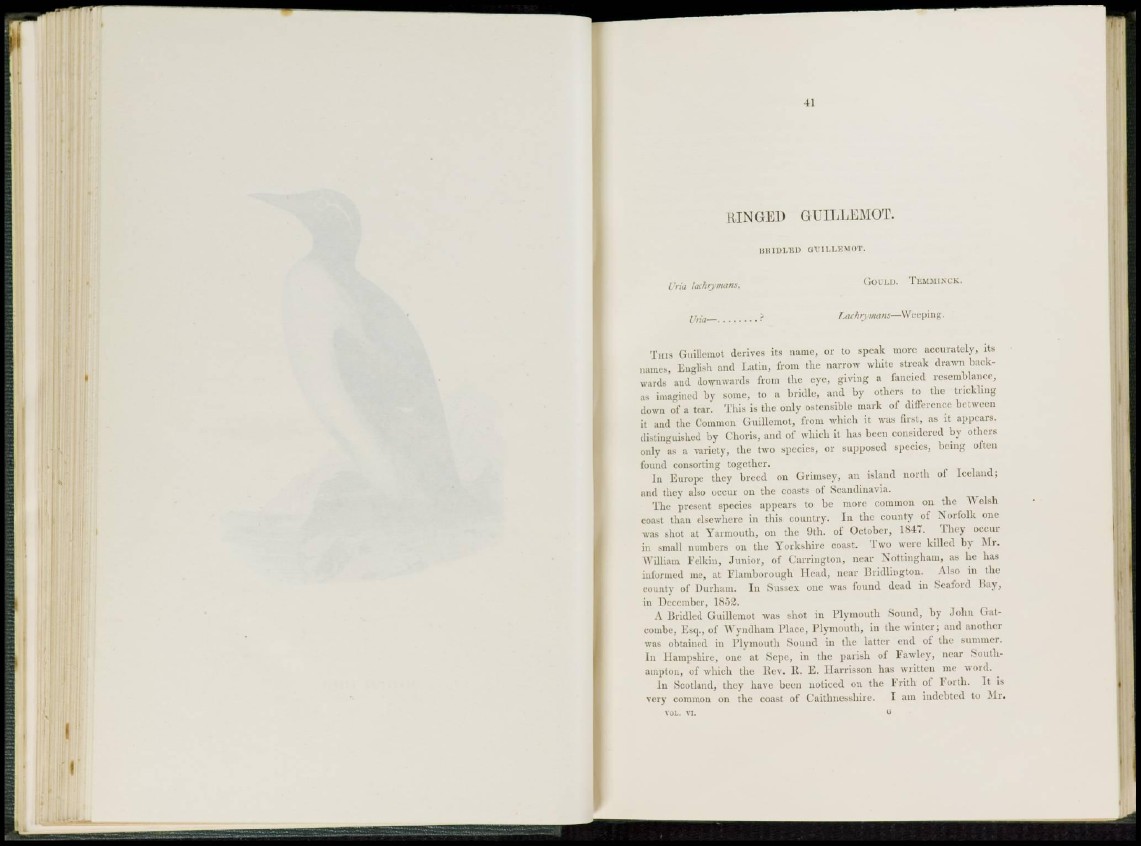
RINGED GUILLEMOT.
BHIDLED GUILLEMOT.
L 'rid iachiymans, GOULD. TKMMINCK.
Ifria— ? T.achrymans—-Weeping.
T i n s Guillemot derives its name, or to speak more accurately, its
names, English and Latin, from the narrow white streak drawn hackwards
and downwards from the eye, giving a fancied resemblance,
as imagined by some, to a bridle, and by others to the trickling
down of a tear. This is the only ostensible mark of difference between
it and the Common Guillemot, from which it was first, as it appears,
distinguished by Choris, and of which it has been considered by others
only as a variety, the two species, or supposed species, being often
found consorting together.
I n Europe they breed on Grhnsey, an island north of Iceland;
and they also occur on the coasts of Scandinavia.
The present species appears to be more common on the \\ elsh
coast than elsewhere in this country. In the county of Norfolk one
was shot at Yarmouth, on the 9th. of October, 1847. They occur
in small numbers on the Y o r k s h i r e coast. Two were killed by Mr.
William Fclkin, Junior, of Carrington, near Nottingham, as he has
informed me, at Flamborough I l e a d , near Bridlington. Also in the
county of Durham. In Sussex one was found dead in Seaford Bay,
in December, 1852.
A Bridled Guillemot was shot in Plymouth Sound, by John Gatcombe,
Esq., of Wyndham Place, P l y m o u t h , in the winter; and another
was obtained in Plymouth Sound in the latter end of the summer.
In Hampshire, one at Scpe, in the parish of Fawley, near Southampton,
of which the Rev. R. E. l l a r r i s s o n has written me word.
I n Scotland, they have been noticed on the Frith of Forth. It is
very common on the coast of Caithnesshire. I am indebted to Mr.